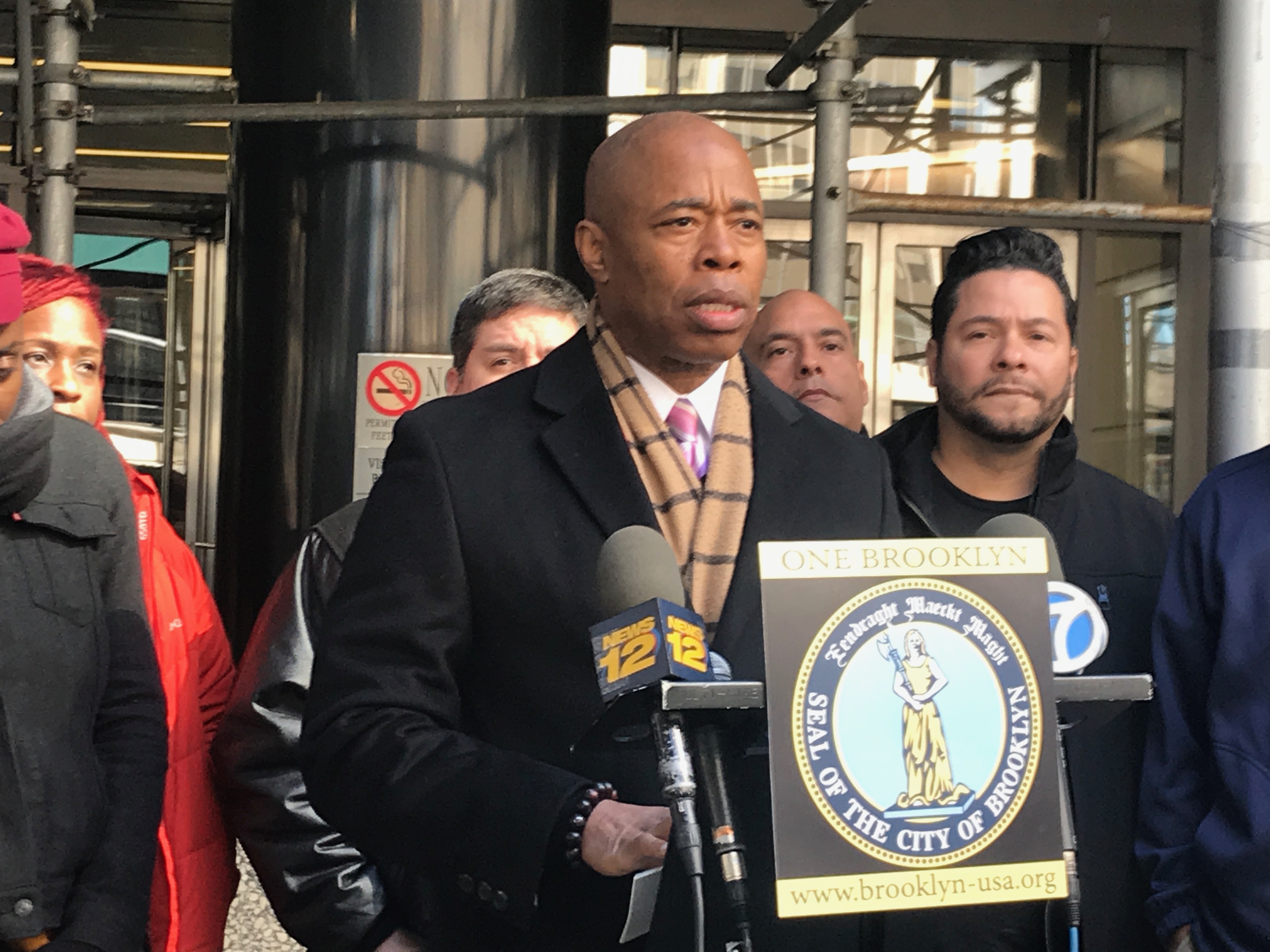Lowest income communities get oldest buses, sparking demand for oversight

Eric Adams demanded hearings into alleged racial and class disparities in bus service on Monday. Eagle photo by Paul Stremple.
Borough President Eric Adams called on both the City Council and the state legislature Monday to hold oversight hearings into recent reports that the MTA disproportionately uses older, higher-polluting buses in poorer Brooklyn neighborhoods.
Seeking a “forensic analysis” into whether or not the inequality was deliberate, Adams said that the hearings should investigate how the problem occurred and hold accountable those who may have been responsible.
“This should not have happened” said Adams. “The MTA and the [Transit Authority] need to do better.”